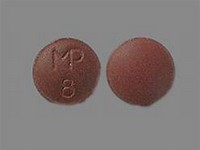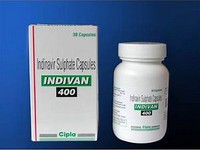verapamil hydrochloride

CLINICAL USE
Calcium-channel blocker: Supraventricular arrhythmias Angina Hypertension
DOSE IN NORMAL RENAL FUNCTION
Oral: Supraventricular arrhythmias: 40–120 mg 3 times daily Angina: 80–120 mg 3 times daily Hypertension: 240–480 mg daily in 2–3 divided doses IV: 5–10 mg followed by 5 mg, 5–10 minutes later if required
PHARMACOKINETICS
Molecular weight : 491.1 %Protein binding : 90 %Excreted unchanged in urine : <4 Volume of distribution (L/kg) : 3–6 half-life – normal/ESRD (hrs) : 4.5–12/Increased DOSE IN RENAL IMPAIRMENT
GFR (mL/MIN)
20 to 50 : Dose as in normal renal function. Monitor carefully 10 to 20 : Dose as in normal renal function. Monitor carefully <10 : Dose as in normal renal function. Monitor carefully DOSE IN PATIENTS UNDERGOING RENAL REPLACEMENT THERAPIES
CAPD : Not dialysed. Dose as in GFR <10 mL/min HD : Not dialysed. Dose as in GFR <10 mL/min HDF/high flux : Unknown dialysability. Dose as in GFR <10 mL/min CAV/VVHD : Dialysability minimal. Dose as in GFR 10 to 20 mL/min IMPORTANT DRUG INTERACTIONS
Potentially hazardous interactions with other drugs Anaesthetics: increased hypotensive effect Anti-arrhythmics: increased risk of amiodarone-induced bradycardia, AV block and myocardial depression; increased risk of myocardial depression and asystole with disopyramide and flecainide Antibacterials: metabolism increased by rifampicin; metabolism possibly inhibited by erythromycin and clarithromycin (increased risk of toxicity) Anti-epileptics: effect probably reduced by barbiturates, phenytoin and primidone; enhanced effect of carbamazepine Antihypertensives: enhanced hypotensive effect, increased risk of first dose hypotensive effect of post-synaptic alpha- blockers Antivirals: concentration possibly increased by atazanavir and ritonavir Beta-blockers: enhanced hypotensive effect; risk of asystole, severe hypotension and heart failure if co-prescribed with beta-blockers Cardiac glycosides: increased levels of digoxin. Increased AV block and bradycardia Ciclosporin: variable reports of decreased nephrotoxicity and potentiated effect; may also increase ciclosporin levels Grapefruit juice: concentration increased – avoid concomitant use Ivabradine: avoid concomitant use Sirolimus: concentration of both drugs increased Statins: increased myopathy with simvastatin – do not exceed 20 mg of simvastatin.1 Tacrolimus: may increase tacrolimus levels Theophylline: enhanced effect of theophylline Verapamil hydrochloride . ADMINISTRATION
Reconstition
– Route
Oral, IV Rate of Administration
Over 2 minutes (3 minutes in elderly) Comments
– OTHER INFORMATION
Monitor BP and ECG Active metabolites may accumulate in renal impairment
See how to identify renal failure stages according to GFR calculation
See how to diagnose irreversible renal disease
Home









